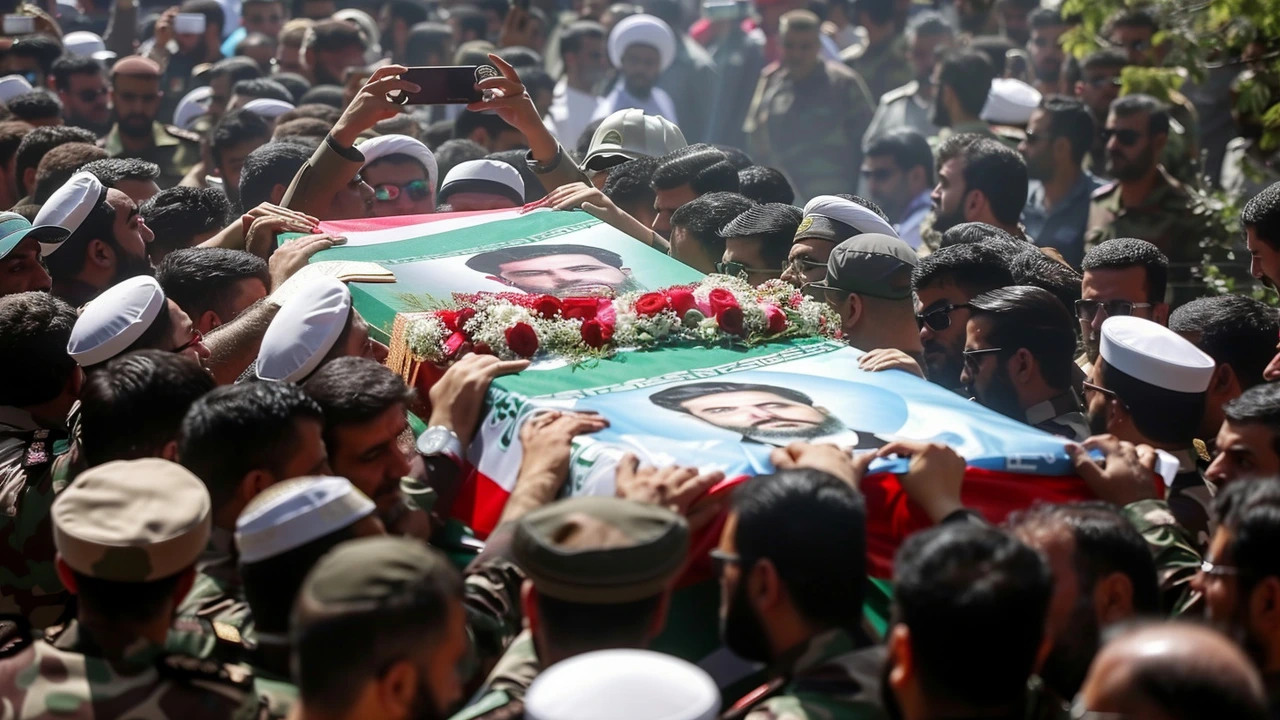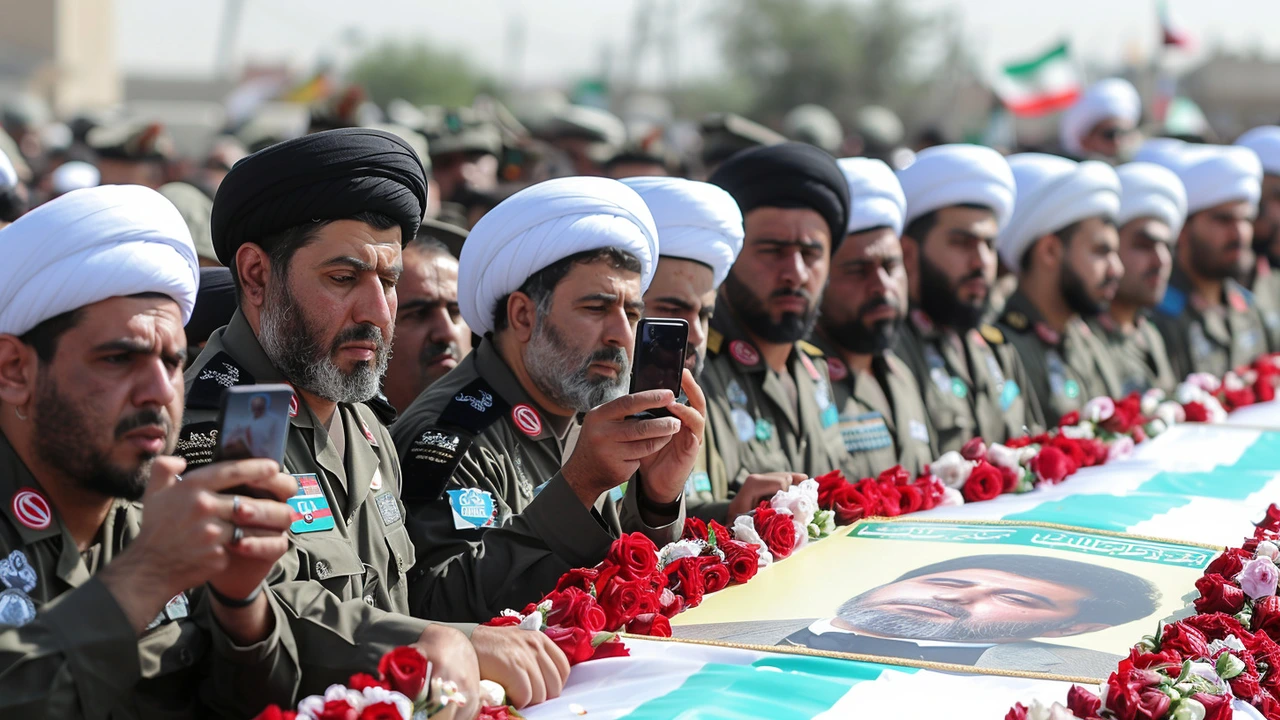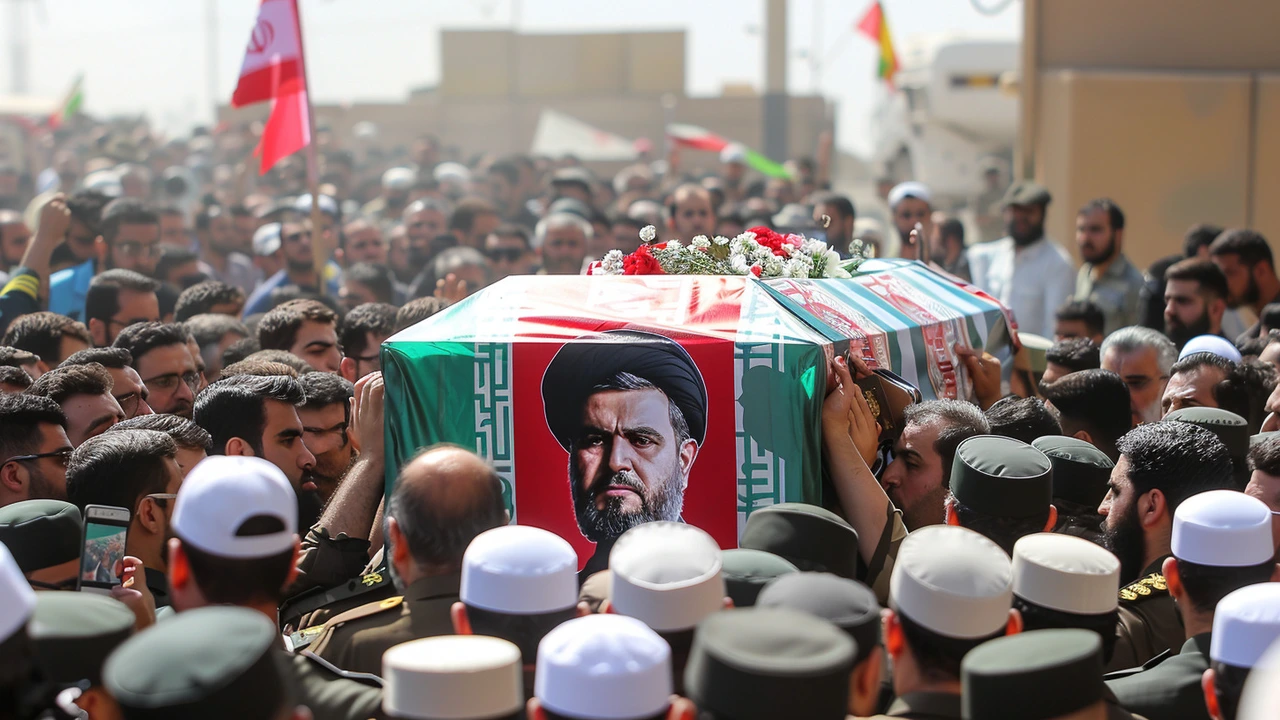Iranian Helicopter Tragedy: President Raisi Among the Victims
A foggy, secluded mountain region in northwestern Iran became the site of a devastating helicopter crash that claimed the life of President Ebrahim Raisi and seven other individuals on board. This tragic incident unfolded on Sunday, leaving a somber silence over the nation and prompting a deep dive into the event's causes.
The helicopter in question, a Bell model, was navigating through treacherous weather conditions when it collided with the mountainous terrain. Following the crash, the helicopter caught fire, eliminating any hopes of survival for those aboard, including the president, who had been serving his country under trying circumstances. This event has resonated deeply, leading to widespread grief and calls for a thorough investigation.
Initial Investigation: No Signs of An Attack
Immediately after the crash, Iran's military announced their preliminary findings, indicating no signs of attack or external interference. This initial examination, disclosed to the public, revealed that the helicopter's flight path appeared normal, with no irregularities noted during its last communication with the control tower. The signs point to environmental and mechanical factors rather than any malicious intent.
The absence of attack evidence does not diminish the magnitude of the tragedy. Rather, it focuses the investigatory lens on other possible causes, such as mechanical failures or the challenging weather conditions. The military's crash investigation team is working diligently, scouring through fragments of wreckage and communication logs to piece together the incident's timeline and cause.

Challenges of Navigating Northwestern Iran
The region where the helicopter crashed is notorious for its difficult flying conditions. Dense fog and rugged mountains make it an area that demands exceptional piloting skill and precise navigation systems. On the day of the crash, these familiar but perilous conditions were in full effect, likely contributing to the helicopter's ill-fated journey.
Helicopters, especially in such remote areas, are essential for government officials and military personnel who need to cover vast and often inhospitable terrain quickly. However, this tragic event highlights the risks inherent in such operations, even when stringent safety protocols are in place. These risks are amplified by factors such as weather unpredictability and the mechanical reliability of the aircraft.
The Implications and the Way Forward
The loss of President Raisi has left a significant void in Iran’s leadership. As the country mourns, there are inevitable questions regarding political continuity and stability. President Raisi was central to several governmental reforms and international negotiations, and his absence will be profoundly felt within both domestic and international spheres.
Further details from the investigation are eagerly awaited. The military's commitment to providing a transparent account of their findings is crucial for public trust. At this juncture, the emphasis is on understanding the factors leading to this calamity to prevent future occurrences. This investigation could lead to recommendations for improving flight safety measures, particularly in regions with challenging topography and weather.

Reactions and Reflections
The international response to President Raisi's demise has been marked by expressions of condolence and solidarity. Leaders globally have extended their sympathies, recognizing the gravity of this incident not only for Iran but for international diplomatic and geopolitical dynamics. The helicopter crash serves as a stark reminder of the ever-present risks faced by leaders and officials as they navigate their duties.
In the wake of such tragedy, the media and public's focus on the personal lives of those affected by the deceased is often intense. Stories of the passengers and crew, their families, and the immediate reaction from the ground are pivotal in humanizing the disaster, shifting it from a mere statistical event to a shared human grieving experience.
Conclusion
The helicopter crash that claimed President Ebrahim Raisi and seven others in northwestern Iran stands as a poignant example of the unpredictable nature of aviation and the inherent risks involved in flying over rugged terrain under adverse weather conditions. Without evidence of an attack, the emphasis remains squarely on environmental and mechanical factors. As investigations continue, the findings will be pivotal in shaping future aviation safety protocols. In the meantime, the nation gathers to mourn and reflect on a significant loss, looking ahead to the challenges of healing and rebuilding amidst this profound tragedy.


Travis Cossairt
Heard about the crash and it got me thinking about how risky those mountain flights can be. The weather up there is notorious for fog and sudden gusts that can catch any pilot off guard. Even a well‑maintained Bell can suffer from reduced lift when the rotors churn cold air. Pilots rely on instruments but sometimes the tech can be fooled by static or signal loss in remote valleys. The report says there were no signs of an attack so we can rule out sabotage for now. That leaves us with the classic trio: human error, mechanical failure, and Mother Nature doing her thing. It’s a reminder that even leaders aren’t immune to the same dangers as any traveler. The military’s quick denial of foul play helps calm rumors but also raises questions about maintenance logs. Helicopters need regular rotor checks because a tiny crack can become a catastrophic fracture at altitude. Fog can also cause spatial disorientation, a condition where pilots lose their sense of up and down. Training for instrument‑only flight is essential but not always perfect. I wonder if the flight path data showed any abrupt altitude changes that could hint at a sudden maneuver. When you stack up a mountain, a canyon, and low visibility you get a recipe for disaster. The loss of president Raisi is a political shock but the aviation angle deserves its own deep dive. In the meantime families of the crew deserve our condolences and the nation should push for stricter safety protocols. This tragedy might finally get the decision‑makers to fund better navigation aids for remote regions. Let’s hope future missions get the tech upgrades they need to avoid such sorrowful outcomes.